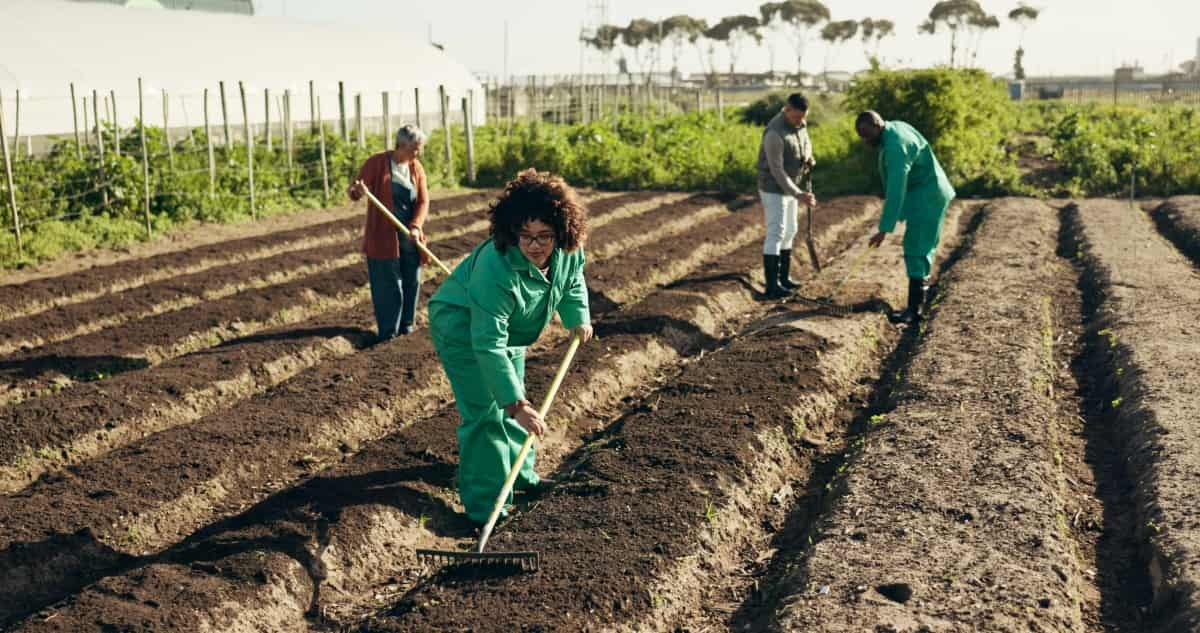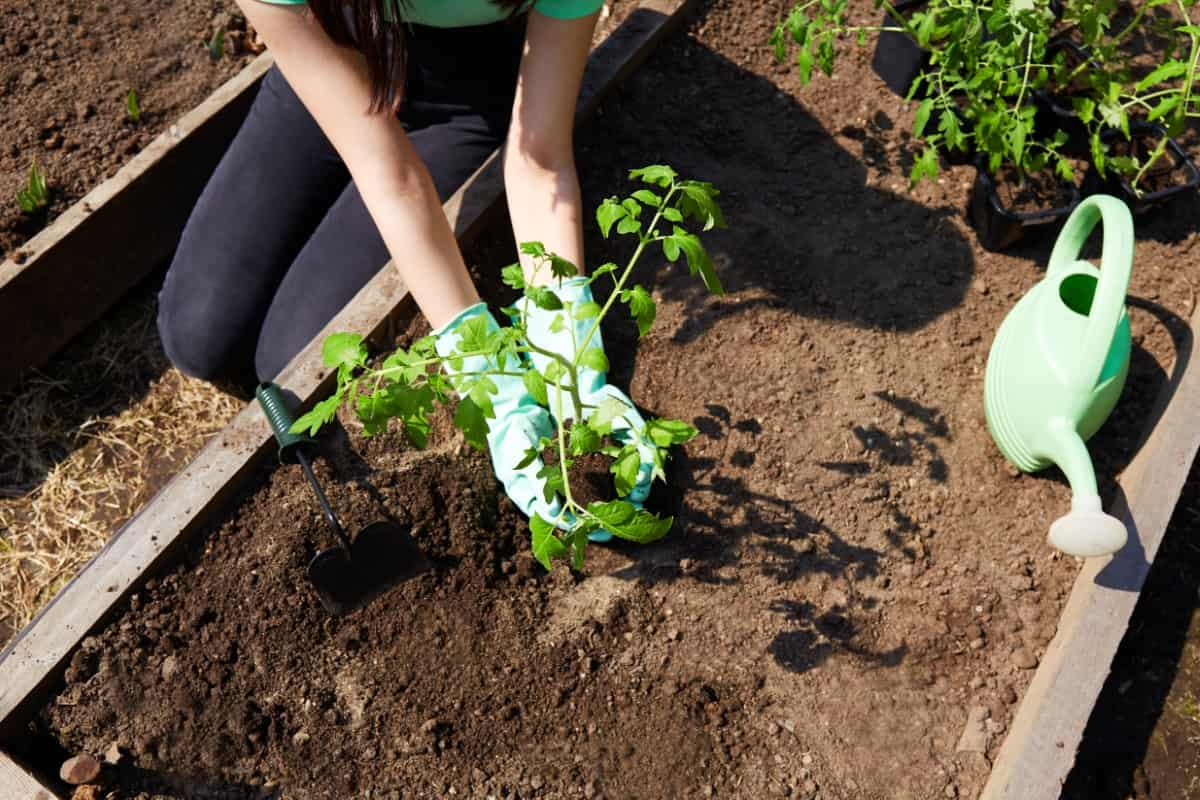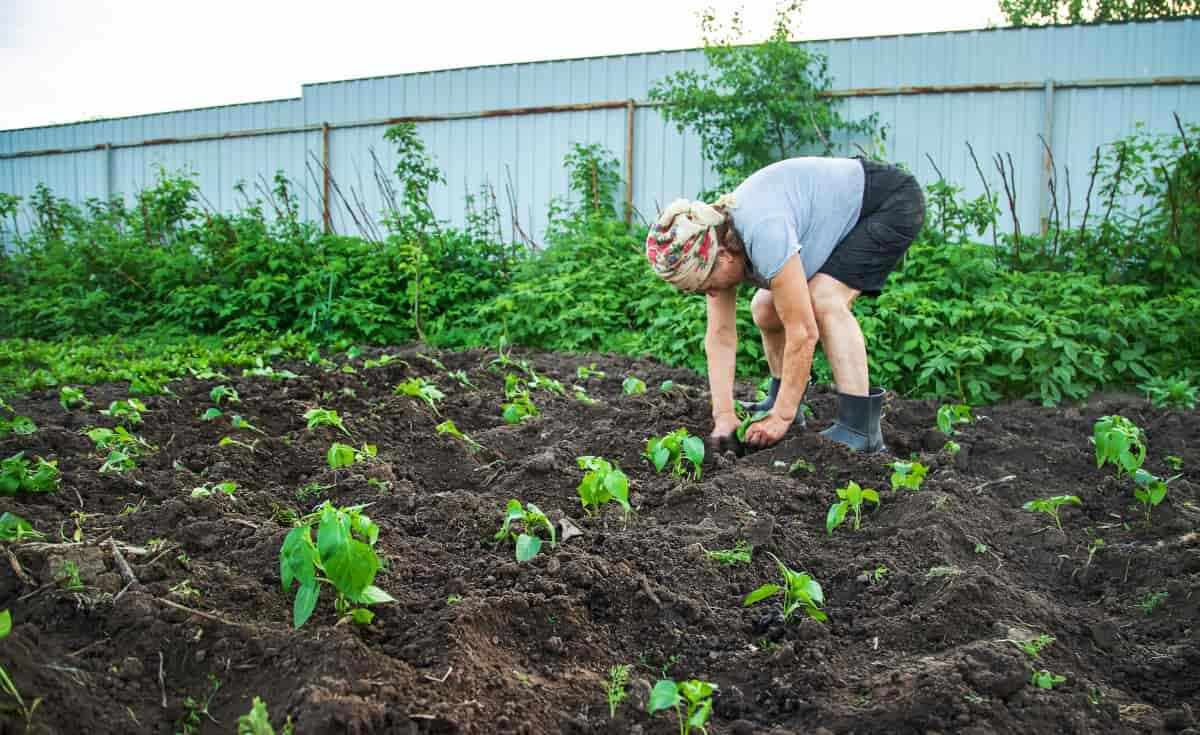Gardening in Zone 6b offers a rewarding experience for those who love to nurture a variety of plants throughout the year. The Zone 6b planting calendar is an essential guide for gardeners, providing specific timelines for planting fruits, vegetables, and flowers. This calendar helps in understanding the right time to sow and harvest, ensuring a successful gardening season.

With a focus on what grows best in Zone 6b, the planting calendar includes a free planting chart that outlines the Zone 6b vegetable planting calendar and the Zone 6b fruit planting schedule, along with the best crops to grow in this zone. Whether you’re planning your spring, summer, fall, or winter garden, this calendar offers invaluable insights for a fruitful and vibrant garden.
Planting Calendar for Zone 6b
Understanding Zone 6b
Zone 6b is characterized by a moderate climate, making it ideal for a diverse range of plants. The temperature in this zone typically ranges from -5 to 0 degrees Fahrenheit in winter, creating a unique environment for gardening. In Zone 6b, the planting schedule is tailored to these conditions, allowing gardeners to plan effectively.
The Zone 6b planting chart acts as a guide for when to plant various fruits, vegetables, and flowers. The Zone 6b vegetable and flower planting schedules are meticulously crafted to optimize the growth potential of every plant. Understanding Zone 6b’s climate helps gardeners decide what crops grow best, ensuring a bountiful harvest and a beautiful garden throughout the year.
Spring Planting Guide for Zone 6b
Spring in Zone 6b is a time of renewal and growth. The spring planting schedule for Zone 6b includes vegetables like lettuce, spinach, and peas, which thrive in the cooler temperatures of early spring. Carrots, radishes, and beets can also be sown during this period, taking advantage of the moist soil.
For fruit enthusiasts, strawberries and raspberries make excellent choices for early planting. Within the realm of floral cultivation, pansies, snapdragons, and tulips serve as ideal choices to enhance your garden’s aesthetic with vibrant hues. Planting these varieties in spring sets the stage for a vibrant and productive garden in the coming months.
Summer Planting Guide for Zone 6b
As the warmth of summer settles in Zone 6b, it’s time to plant heat-loving vegetables and fruits. The Zone 6b summer planting schedule includes vegetables like tomatoes, peppers, and cucumbers, which thrive in warmer temperatures. Corn, squash, and beans are also great additions to your summer garden.
In case you missed it: Planting Calendar for Zone 2b: Schedule for Vegetables, Fruits, and Flowers in Summer, Winter, Fall, and Spring

For fruit planting, consider watermelon, cantaloupe, and peach trees, which enjoy the heat and provide delicious harvests. Summer flowers like marigolds, zinnias, and sunflowers can be planted to add beauty and attract pollinators. Summer planting in Zone 6b focuses on plants that can withstand the heat and provide a bountiful harvest in late summer and early fall.
Fall Planting Guide for Zone 6b
The cool temperatures of fall in Zone 6b are ideal for planting a variety of vegetables and flowers. The autumn planting timetable for Zone 6b encompasses cold-resistant leafy greens like kale and collards, which are capable of withstanding mild frosts. Root vegetables like turnips, garlic, and onions are also suitable for fall planting.
This period is also a good time to plant perennial herbs like thyme and rosemary. Fall flowers such as chrysanthemums and asters add color and life to the garden as other plants begin to fade. Planting in the fall prepares your garden for early spring growth and ensures a continued supply of fresh produce and blooms.
Winter Planting Guide for Zone 6b
Winter in Zone 6b presents unique opportunities for gardening. The Zone 6b winter planting schedule is ideal for cold-hardy vegetables like Brussels sprouts, parsnips, and winter lettuce, which can survive the chilly temperatures. Planting cover crops such as clover and rye can also be beneficial, helping to enrich the soil for the next planting season. Winter is also a good time to plan and prepare for the upcoming spring by organizing your garden and ordering seeds. While growth is slow, winter planting in Zone 6b lays the foundation for a successful spring garden.
Fruit Planting Calendar for Zone 6b
For gardeners interested in fruit cultivation, the Zone 6b fruit planting schedule is an invaluable resource. You can plant apples, pears, and plums in early spring once the risk of frost has diminished. Berry bushes like blueberries and blackberries should also be planted in spring to establish their roots before the heat of summer. Grapes and cherries are other fruitful options for Zone 6b, thriving in the moderate climate. Following the fruit planting calendar ensures that each fruit variety is planted at the optimal time for growth and harvest, leading to a fruitful and rewarding gardening experience.
In case you missed it: Planting Calendar for Zone 4a: Schedule for Vegetables, Fruits, and Flowers in Summer, Winter, Fall, and Spring

Vegetable Planting Calendar for Zone 6b
In Zone 6b, the vegetable planting calendar is tailored to suit the distinct seasons, ensuring that gardeners can grow a variety of nutritious and delicious vegetables all year round. In early spring, cool-season crops such as lettuce, spinach, and peas are ideal, taking advantage of the cooler temperatures and moist soil. As the season progresses, root vegetables like carrots, radishes, and beets can be sown. When summer arrives, it’s time to plant warm-season vegetables like tomatoes, peppers, cucumbers, corn, squash, and beans, which thrive in the heat and produce bountiful yields.
As fall approaches, the focus shifts back to cool-season vegetables, including kale, collards, turnips, garlic, and onions, which can tolerate light frosts and cooler temperatures. In winter, it’s possible to cultivate cold-resistant vegetables such as Brussels sprouts and winter lettuce while also laying the groundwork for the forthcoming spring season in your garden. This comprehensive vegetable planting calendar ensures a year-round supply of fresh vegetables from your garden.
Flower Planting Calendar for Zone 6b
The flower planting calendar for Zone 6b is designed to bring color and beauty to the garden throughout the year. Spring is the perfect time to plant early bloomers like pansies, snapdragons, and tulips, setting the stage for a vibrant display. As the weather warms in summer, planting heat-resistant flowers such as marigolds, zinnias, and sunflowers not only adds beauty but also attracts essential pollinators to the garden. In the fall, as other plants begin to wane, flowers like chrysanthemums and asters keep the garden lively with their bright colors.
While winter is generally a quiet period for flower gardening, it’s an ideal time for planning and preparation, ensuring that the garden is ready for a burst of growth in the coming spring. The flower planting calendar for Zone 6b guides gardeners in creating a garden that is a feast for the eyes and a haven for wildlife throughout the year.
Planting Schedule for Different Seasons for Zone 6b
| Season | Vegetables | Fruits | Flowers |
| Spring | Lettuce, Spinach, Peas, Carrots, Radishes, Beets | Strawberries, Raspberries | Pansies, Snapdragons, Tulips |
| Summer | Tomatoes, Peppers, Cucumbers, Corn, Squash, Beans | Watermelon, Cantaloupe, Peach Trees | Marigolds, Zinnias, Sunflowers |
| Fall | Kale, Collards, Turnips, Garlic, Onions | Apples, Pears, Plums | Chrysanthemums, Asters |
| Winter | Brussels Sprouts, Parsnips, Winter Lettuce | (Planning and preparation for spring) | (Planning and preparation for spring) |
In case you missed it: Planting Calendar for Zone 8b: Schedule for Fruits, Vegetables, and Flowers in Summer, Winter, Fall, and Spring

Conclusion
The Zone 6b planting calendar, encompassing both vegetables and flowers, is a fundamental tool for gardeners in this region. It guides them through the varying temperatures and conditions of each season, ensuring that they can maximize the potential of their gardens. From the first blooms of spring to the harvests of summer, the cool-weather planting in fall, and the preparation in winter, this calendar aids in creating a garden that is not only productive but also a beautiful sanctuary.
- Feed Your Flock for Less: Top 10 Tips to Save on Chicken Feed
- Ultimate Guide to Ossabaw Island Hog: Breeding, Raising, Diet, and Care
- Hatching Answers: The Top 10 Reasons Your Chickens Aren’t Laying Eggs
- Eggs and Economics: Breaking Down the Cost of Raising Backyard Chickens
- Defend Your Greens: Proven Methods to Keep Iguanas Out of Your Garden
- Ultimate Guide to Cinnamon Queen Chicken: A Comprehensive Guide for Beginners
- Ultimate Guide to California Tan Chicken: Breeding, Raising, Diet, Egg-Production and Care
- Ultimate Guide to Marsh Daisy Chicken: Breeding, Raising, Diet, and Care
- 10 Types of Chicken Farming Businesses You Can Start for Profits